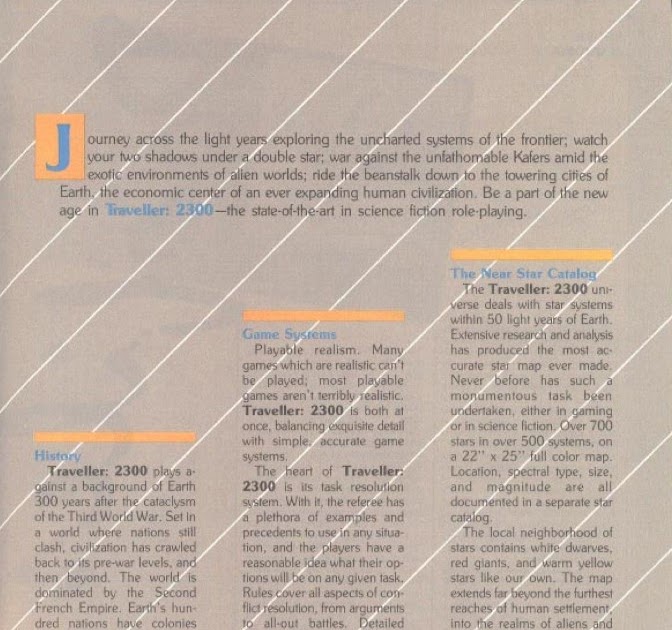SMOOSH JUICE
Playable Realism

Apologies in advance for the poor quality of this image, but it was the best I could find. It’s the second page of a two-page advertisement (the first page is almost identical to the one I posted yesterday) for GDW’s then-upcoming science fiction RPG, Traveller: 2300, which appeared in issue #115 (November 1986) of Dragon.
The advertisement is significant for a couple reasons. First, the section under the heading “history” suggests a connection to Twilight: 2000, though it’s not explicit. That was the first indication my younger self had to the fact that this wasn’t, despite its title, a prequel game to Traveller. My younger self was also confused by the reference to the “Second French Empire,” since, being very keen on history, I remembered the period between 1852 and 1870, when Louis-Napoleon Bonaparte reigned as Napoleon III. It was a rare misstep by GDW, a company that usually gets its history right, and was soon corrected in subsequent ads and in the text of Traveller: 2300 itself, but I still remember the error to this day.
The second notable thing about the advertisement is its emphasis on “playable realism,” both in its game mechanics and in its scientific speculations. Rules-wise, Traveller: 2300 isn’t anything special, even for its time. In fact, there were enough problems with its original rules that I suspect it’s the reason why GDW went ahead with a revision of the entire game less than two years later (under the title, 2300AD, by which its usually known).
However, on the science end of things, Traveller: 2300 was definitely a step up from Traveller‘s broader, slightly more space opera take on these matters – or so it appeared in 1986. Science, especially astronomy and astrophysics, is a constantly evolving body of knowledge, so I can’t blame the designers at GDW were not being up on the latest data and theories. Remember, this was before the Internet made it much easier to keep up to date. Given what they had to work with, I think GDW did a creditable job of creating a plausible, grounded vision of human interstellar civilization three centuries hence.
I certainly liked it – so much so that I largely abandoned my true love, Traveller proper, for a number of years in favor of its little brother. And, despite its many flaws, I still love the idea of Traveller: 2300, hence my desire to one day follow up Barrett’s Raiders with a science fiction campaign depicting Earth and its interstellar colonies several centuries after the wreck of the Twilight War.

